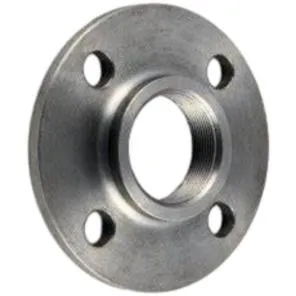-
Cangzhou Yulong Steel Co., Ltd.
-
Phone:
+86 13303177267 -
Email:
admin@ylsteelfittings.com
- English
- Arabic
- Italian
- Spanish
- Portuguese
- German
- kazakh
- Persian
- Greek
- French
- Russian
- Polish
- Thai
- Indonesian
- Vietnamese
- Zulu
- Korean
- Uzbek
- Hindi
- Serbian
- Malay
- Ukrainian
- Gujarati
- Haitian Creole
- hausa
- hawaiian
- Hebrew
- Miao
- Hungarian
- Icelandic
- igbo
- irish
- Japanese
- Javanese
- Kannada
- Khmer
- Rwandese
- Afrikaans
- Albanian
- Amharic
- Armenian
- Azerbaijani
- Basque
- Belarusian
- Bengali
- Bosnian
- Bulgarian
- Catalan
- Cebuano
- China
- China (Taiwan)
- Corsican
- Croatian
- Czech
- Danish
- Esperanto
- Estonian
- Finnish
- Frisian
- Galician
- Georgian
- Kurdish
- Kyrgyz
- Lao
- Latin
- Latvian
- Lithuanian
- Luxembourgish
- Macedonian
- Malgashi
- Malayalam
- Maltese
- Maori
- Marathi
- Mongolian
- Myanmar
- Nepali
- Norwegian
- Norwegian
- Occitan
- Pashto
- Dutch
- Punjabi
- Romanian
- Samoan
- Scottish Gaelic
- Sesotho
- Shona
- Sindhi
- Sinhala
- Slovak
- Slovenian
- Somali
- Sundanese
- Swahili
- Swedish
- Tagalog
- Tajik
- Tamil
- Tatar
- Telugu
- Turkish
- Turkmen
- Urdu
- Uighur
- Welsh
- Bantu
- Yiddish
- Yoruba

Sep . 12, 2024 06:56 Back to list
Flanged Outlet Solutions | Durable & Reliable Flanged Outlets
Understanding Flanged Outlets Design and Applications
Flanged outlets are a critical component in various piping systems, serving as a junction point where fluid can be directed from one section of piping to another. These outlets, which feature a flange—a flat piece of metal with holes for bolting—allow for secure connections between different parts of a system, ensuring that they remain leak-proof under pressure.
Design Aspects of Flanged Outlets
The design of flanged outlets can vary significantly, depending on their intended application and the materials used. Typically, they are crafted from materials such as stainless steel, carbon steel, or PVC, each chosen for durability and resistance to corrosion or wear. The flange is usually designed in accordance with specific industry standards, which can dictate dimensions, thickness, and the type of bolt holes required for secure attachment.
The outlet itself, which can be either welded or threaded onto the main pipe, often incorporates various end types, such as threaded, socket-weld, or buttweld ends, allowing for flexibility in installation. This adaptability ensures that flanged outlets can be seamlessly integrated into existing systems, whether in industrial settings, commercial buildings, or residential applications.
Applications of Flanged Outlets
Flanged outlets are prominently used in various industries, including oil and gas, water treatment, and chemical manufacturing
. In these fields, they facilitate the safe and efficient transport of fluids under high pressure. For instance, in oil and gas operations, flanged outlets connect pipelines to tanks and pumps, playing a vital role in maintaining system integrity while allowing for easy service and maintenance.flanged outlet

In water treatment facilities, flanged outlets are equally essential. They serve as discharge points for treated water and points of injection for chemicals, ensuring that various processes proceed smoothly. Moreover, the ability to easily add or replace components without disrupting the entire system makes flanged outlets a favored choice among engineers.
Installation and Maintenance
Installing a flanged outlet requires precision. The flanges must be properly aligned and secured with bolts that are tightened to the manufacturer’s specifications. An improper installation can lead to leaks or system failures, posing safety risks and costly downtime.
Regular maintenance of flanged outlets also plays a crucial role in ensuring their longevity and performance. Inspections should include checking for corrosion, tightness of bolts, and any signs of fluid leakage. Maintaining proper torque on flanged connections can help in preventing failures that arise from loosening over time.
Conclusion
In summary, flanged outlets are indispensable in contemporary piping systems, offering versatility, security, and ease of maintenance. As industries continue to evolve, the demand for reliable and efficient components such as flanged outlets will undoubtedly grow, highlighting the need for ongoing innovation in their design and application. By selecting the right materials and adhering to best practice installation and maintenance standards, operators can ensure the long-term effectiveness of these crucial system components.
Latest news
-
ANSI 150P SS304 SO FLANGE
NewsFeb.14,2025
-
ASTM A333GR6 STEEL PIPE
NewsJan.20,2025
-
ANSI B16.5 WELDING NECK FLANGE
NewsJan.15,2026
-
ANSI B16.5 SLIP-ON FLANGE
NewsApr.19,2024
-
SABS 1123 FLANGE
NewsJan.15,2025
-
DIN86044 PLATE FLANGE
NewsApr.19,2024
-
DIN2527 BLIND FLANGE
NewsApr.12,2024
-
JIS B2311 Butt-Welding Fittings LR/SR 45°/90° /180°Seamless/Weld
NewsApr.23,2024











